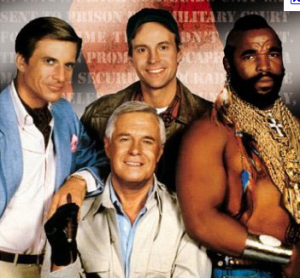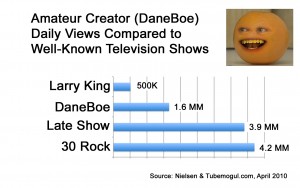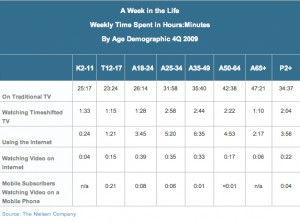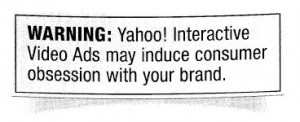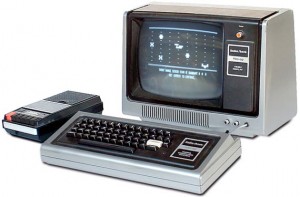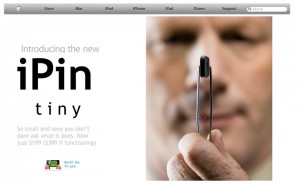
I’m a long-time advocate of the AppleTV, and intrigued enough by the iTV that I’ve got one on route. So what’s the difference, you ask? First check out Ryan/NewTeeVee’s coverage of AppleTV vs. Roku vs. Boxeee. Liz/NewTeeVee provides more in-depth coverage of the AppleTV/iTV.
So there’s no iTV. It’s just a new version of AppleTV, where the price of the unit was slashed in third. At $99 you won’t likely find a smoother interface to stream your content… assuming it’s as user-friendly and fast as AppleTV’s earlier model (around $300 with some room for storage).
We like the lower entry price making it an impulse buy, and the 99-cent rentals of television shows we miss — despite our best attempts via TiVo or the vintage DVR you’re using because you’re the cable company’s little bitch.
Until now we were buying assloads of missed television shows at twice that price ($1.99), and that’s a bit bloated for a 23-minute show (but certainly fair for an 45-minute show). We’re talking about decent HD, no stupid pre-rolls, an easy interface, and easy purchasing via the credit card Mac has on file. And for 95% of the shows we bought, a rental would be fine.While we’re not happy to see episodes costing $2.99 to own now, we’re hoping that our old AppleTV enjoys a software upgrade that makes it a new one. Otherwise we feel screwed. Except “The Office” and a few other shows, we don’t need to own in a reasonably priced “on demand” word. Wait that’s a drop quote.
We don’t need to own in a reasonably priced “on demand” word.
I find it perplexing that the unwashed masses are only beginning to adopt these things. We’ve got a Roku that’s not used often except for occasional Netflix viewing. The TiVo is the primary device because it plays live Verizon Fios without subjecting us to the horrible Verizon machines… TiVo also allows us to “subscribe” to YouTubers like “Obama Girl” and “Rhett & Link” and “The Onion” and “College Humor.”
Maybe I’ll do a little video demo when I get the new AppleTV because I read Scoble’s tweet that we can use our iPad as a remote to the new AppleTV, something that didn’t seem very easy with the old one.
Bottom line:
- AppleTV is different in two ways. Cheaper unit ($99 not $300), and now you can rent all that television you missed or if you’re still not paying for access to premium channels because you’re a cheap bastard like me. Wait that made no sense. I’m probably paying more by buying these shows.
- More choices (in hardware and vendor/price options) means a more confused marketplace but more attention by the mass market. Only one or two will survive, and you’re going to be getting lots of questions from your parents in the next few years. At least there’s no flashing 12:00 to worry about.
- I’d predict that these will be mainstream by the fall, but I’m a bit gun shy making that prediction a 5th year in a row. I can’t even remember how I hedged this subject in my book, which is coming out in a week or so.
- If I talk about my book too often, please tell me. I have seen authors do that, and it’s revolting. If I’m walking around with spinach in my teeth, you’d say something right?
- How the heck did Netflix secure its space in this evolution? We thought they’d be Blockbustered.
- It doesn’t bother me that only two people read my blog carefully.
- Seriously- give me one good reason NOT to have a friggin’ Roku/Netflix/TiVo/AppleTV in your house? Sure it’s a few more devices and subscriptions, but we think this Onion spoof on Blockbusters is a reality now. When’s the last time you rented a DVD?
- Is anyone else feeling like YouTube has gone WAY to far with the pre-rolls lately?

